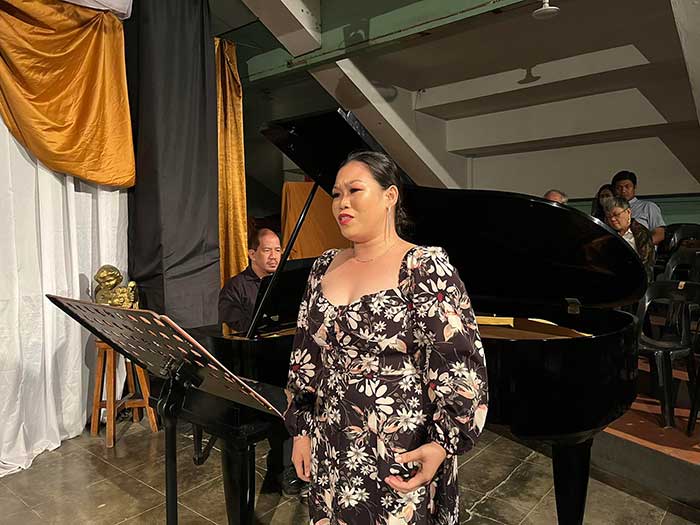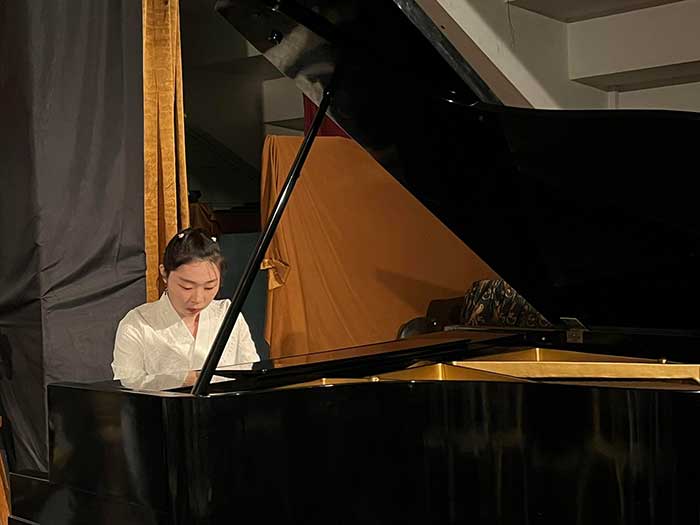By John Anthony S. Estolloso
YOU HAVE probably encountered Chopin’s music at a hotel lobby.
That experience is excusable: much as the audience is dazzled by the fugal geometries of Bach or the arpeggiated acrobatics of Rachmaninoff, Chopin prefers to lull his listener to sleep – or at least, put him in torpid thought. In the entirety of the composer’s repertoire for the instrument, one encounters technical depth mixed into emotional lyricism: one can always relax to a Chopin polonaise played at a hotel lobby – but never even think of using it as music for the dance hall.
Though most music lovers revere his short pieces, no one readily attends a concert to peruse a five-minute etude or nocturne: as such, the pianist – to showcase both his and the composer’s technicality – either plays Chopin as a complete set, or he performs extracts as solo encores meant to send listeners on their way home in a happy, languid mood: who does not love humming ‘No Other Love’ while egressing the concert hall?
While there was a rather eclectic selection of Chopin’s works presented last April 13 at the University of San Agustin’s Conservatory of Music, it was altogether a worthy homage to the composer’s legacy to music. Featured during that evening as well were some of Chopin’s songs, which were admittedly much eclipsed by the popularity of his compositions for the piano.
Audiences familiar with his Preludes and Nocturnes regaled in the sonority, phrasing, and delicacy of touch demanded from the pianists. Not necessarily composed as introductory pieces, they exemplified the poetry of Chopin’s music, and despite the shaky execution of some of the tricky passages of the D Flat and A Flat preludes that evening, the metered phrasing and gravity of tone were much evident.
The C Minor and C Sharp Minor nocturnes were decently executed; the adored melody of the E Flat Nocturne was a tad dry, with the grace notes given too much weight. However, the poignant sentiment of the night-music was not lost to the audience.
Ironically, Chopin’s dances sound best when played on the piano: there are orchestral arrangements of his waltzes, but they sound bland beside a Strauss number. Still, his catalogue of mazurkas, polonaises, and waltzes composed for the instrument remains as programme favorites by professional pianists, demanding much control and delicateness in the playing of rubati and the flow and ebb of crescendos.
The waltzes and mazurkas of the evening all went through varied degrees of consistency in performance. Of course, the alternating pull and flow of Chopin’s lyrical melodies defies the triple meter of the conventional waltz – and this the pianists were able to establish; the mazurkas, on the other hand, were frenetic in execution.
Most familiar to the student and the serious listener would be Chopin’s Études: as if to give credence to his mastery of the instrument, Chopin explores the entire range of keys in ‘studies’ meant to train rigorously the fledgling pianist in the finer nuances of performance. Needless to say, these exquisite pieces have become part of the canon of piano music, setting high standards for the performer.
Recordings have provided diverging interpretations of these études, ranging from the polished to the peculiar. Seizing that evening’s spotlight momentarily was Micah Perez’s unconventional playing of the beloved E Minor étude: syncopated to the point of sybaritic abandon, she raced through the chords and plowed through the romantic theme, almost obscuring that much beloved melody: eccentric – but in the most avant-garde manner.
Overall, the Conservatory’s piano corps came through that evening, albeit the unraveling of some knotty passages. Two performances especially stood out: John Edward Posecion’s nonchalant rendering of the E minor series of waltzes and Uijin An’s stately interpretation of the G minor Polonaise gave glimpses of future promising recitals: there was mastery, there was depth, there was verve – a tad more emotional pull would have let surface what was truly Romantic in the music.
The more obscure songs of the composer found new voice in the talents of singers Joebert Anuran, Jr., Yves Adrian Gabasa, Demmie Nicolette Maza, and Amabelle Pamocol. Who would have thought that Chopin’s musical lyricism transcended beyond ivory and ebony keys?
* * * * *
This year marks the 175th death anniversary of Chopin. Incontestably, his music is here to stay, and generations of hopeful pianists will continue to look up to his compositions as benchmarks for performance. For listeners, there will always be that tranquil romance tucked in the notes: whether at a hotel lobby or a concert hall, his music will continue to warm the cockles of our hearts.
(The writer is the subject area coordinator for Social Studies in one of the private schools of the city. The photos are from Jomel Garcia.)

























